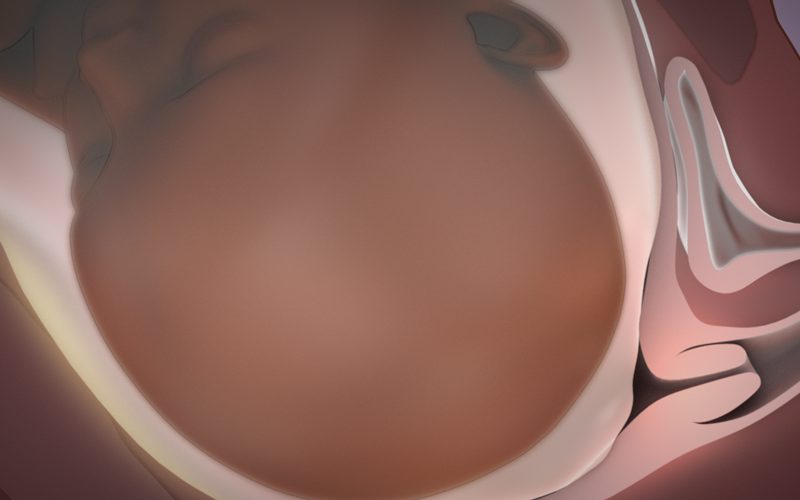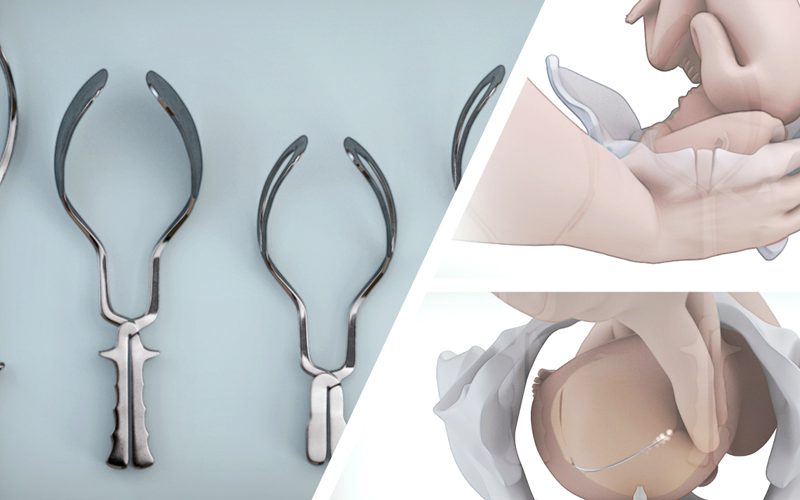Primary vertex Cesarean section
With exteriorized uterus closure and subcutaneous closure
00:14 Surgical plan overview
03:37 Abdominal entry
05:50 Protecting the bladder
07:00 Delivery of infant
09:08 Exteriorized uterus closure
13:25 Abdominal closure
Case Description
- The patient is a 31 year old woman, about 40 weeks into pregnancy, and elected to have a Cesarean section delivery procedure.
- Following a Pfannensteil incision, the subcutaneous fat and rectus sheath is divided, followed by blunt separation of the rectus abdominis muscles.
- The peritoneum is divided sharply, visualizing the lower uterine segment.
- The vesicouterine peritoneum is identified and divided. Blunt dissection is used to identify the potential space between the uterus and bladder.
- A Balfour retractor is inserted in the space, to protect the bladder in subsequent steps of the procedure.
- An incision is made carefully on the uterus, dividing the uterus layer by layer, to prevent injury to the infant.
- Once the infant's head is seen, the surgeon's dominant hand is used to cover the occiput, and the infant's head is gently flexed.
- Fundal pressure is applied, while the infant's head is brought up to the surface of the incision.
- The anterior shoulder is delivered, followed by the remaining shoulder, and the torso.
- With the infant delivered, the umbilical cord is clamped and cut. A section of the cord is collected for analysis, and the placenta is delivered spontaneously.
- The uterus is exteriorized for repair, using one layer of continuous locked sutures, followed by one layer of imbricating sutures.
- The imbricating sutures buries the first suture layer, and provides additional structural strength to the uterine wall.
- While constructing the second suture layer, care is taken to avoid the bladder, as well as the first suture layer.
- The uterus is re-introduced into the abdomen, and the rectus fascia, as well as the subcutaneous fat is closed, followed by skin closure.



